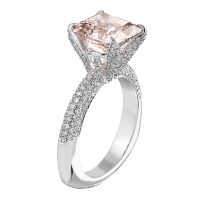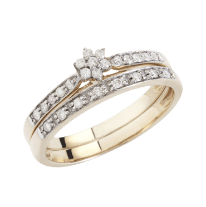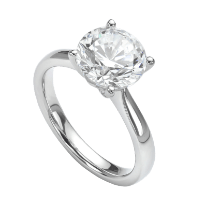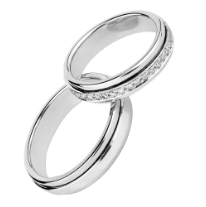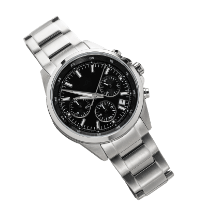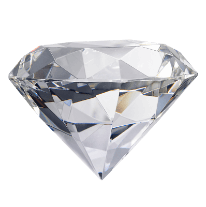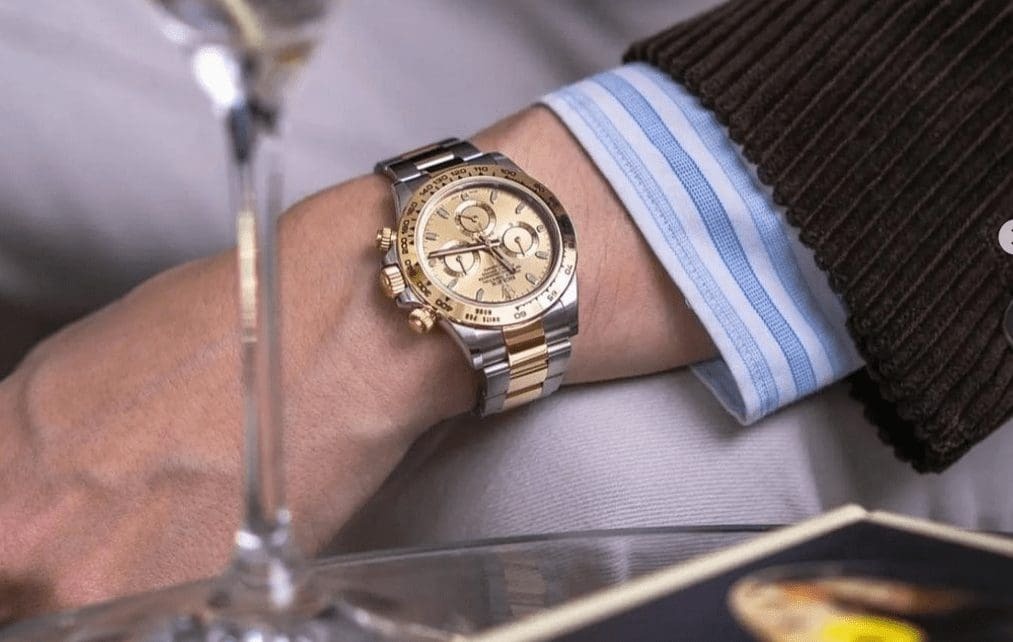We know how overwhelming watches can be when first getting into them. In this article, we tackle the eight topics and eight concepts that we think everybody should know about watches if they desire to learn more about them.
Before we get into this article, which looks at eight topics, one other thing to mention: We have two other articles that will be good to read in conjunction with this article. One will look at the terminology around watches.
It’s good to know the different parts of a watch if you want to know more about watches. The other one is more about complications. Complications are basically anything outside of just telling the time on a watch, so any other function.
Table of Contents
1.Types of Watch Movements
To begin here, I think the first place to start is looking at the two primary types of watches, and by that, I mean basically the movements inside of them.
You have your mechanical watches, and you also have your quartz watches.
Mechanical, Quartz or Automatic Watches
There are two different types of mechanical watches. You have your manual or hand-wound watches, which actually require you, as the owner of the watch, to manually wind the watch using the crown inside of the case.
Or you also have your automatic watches, which will wind automatically with the help of a winding mass or a rotor on the back of the movement that will wind around or circulate around the movement and help wind the mainspring inside the watch to provide it power.
From here, basically, the process for actually telling the time is essentially the same once that watch is wound. All the stored energy in this winding is done by coiling up a mainspring inside a barrel in the watch.
This is basically the epicenter for where power is stored within a wristwatch. What’s happening from here is once that mainspring coils up very tightly, it then will gradually start releasing energy through a gear train.
It will basically go down this gear train to a thing called an escapement and then work in unison with a balance wheel.
A lever watch movement. Left to right, mainspring barrel, center wheel, third wheel, fourth wheel, escape wheel, and lever; balance not shown, for clarity. The animation is of an ETA 6497 which was originally designed as a pocket watch movement. In a classically set up watch, the center wheel turns once an hour and the fourth wheel, once per minute; the fourth wheel drives the sub-seconds and the center wheel, the motion works for the hour and minute hands.
What’s happening here is that escapement wheel and then a pallet fork are going to lock, unlock, lock, unlock.
The other end of that pallet fork has a small pin that it’s activating on with that balance wheel that’s going back and forth, back and forth, basically acting like a pendulum. That is going to be the basis of being able to tell time.
How this is going to translate on the front end of the watch is you’ll find the second hand of a mechanical watch usually ticking as a sweeping seconds hand.
It’s more constant with its flow of movement rather than a tick, tick, tick. It’s more like tick, tick, tick, tick, tick.
That’s what you’ll see on that front end. This is not always a foolproof way. Sometimes quartz watches will have kind of more of that sweep being emulated, but that is what’s happening.
It’s using full mechanical energy to power a watch just through gears, springs, and things of that sort.
All these mechanical watches typically will have beat frequencies of three hertz, four hertz, and are not going to last forever.
If you put a mechanical watch down for a period of time because it’s using mechanical power, it needs to be wound, whether through wear or through manual winding.
It usually will have a power reserve, which is basically how long this process of stored energy from that mainspring will happen until it runs out of that stored energy and will gradually just completely uncoil.
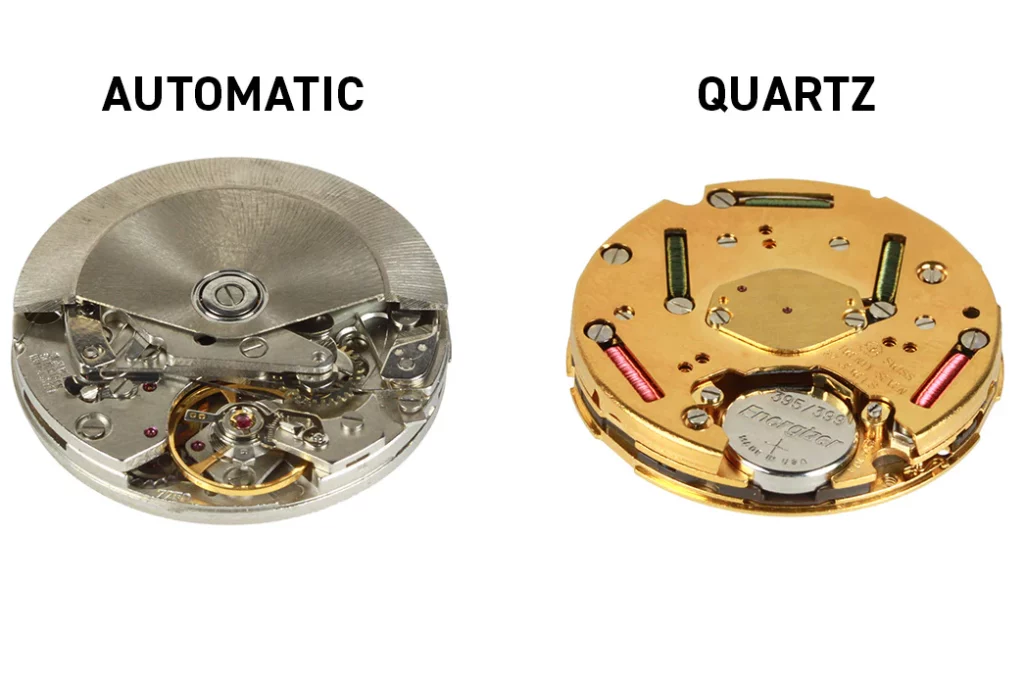
The other most popular type of watch is a quartz watch. A quartz watch is going to be a watch that, instead of using mechanical power to actually power the watch, is powered through an actual electrical charge using a battery.
What is a Quartz Movement?
Quartz movements, unlike mechanical watches, are much more accurate and are much easier to produce once they were developed.
Just to give some concept here on the accuracy of a quartz watch, typical cheap quartz watches that are out there are actually more accurate over a month than many mechanical watches are over a day.
How a quartz movement works is through taking power from that battery and then through a small electrical charge that is created by the battery, it is then passed to an integrated circuit and then delivered to a quartz crystal.
It’s cut like a small tuning fork inside. It’s nearly microscopic here. Not to get too technical, but when that quartz crystal is sent that specific electrical charge, it is then going to vibrate incredibly quickly.
We’re talking 32,768 times per second as a result of an idea called the piezoelectric effect, which is basically an idea when an electrical impulse is sent to a quartz crystal, it is then going to vibrate at a specific frequency.
This was calibrated in a way where it’s going to vibrate at that specific frequency here to allow it to tell time.
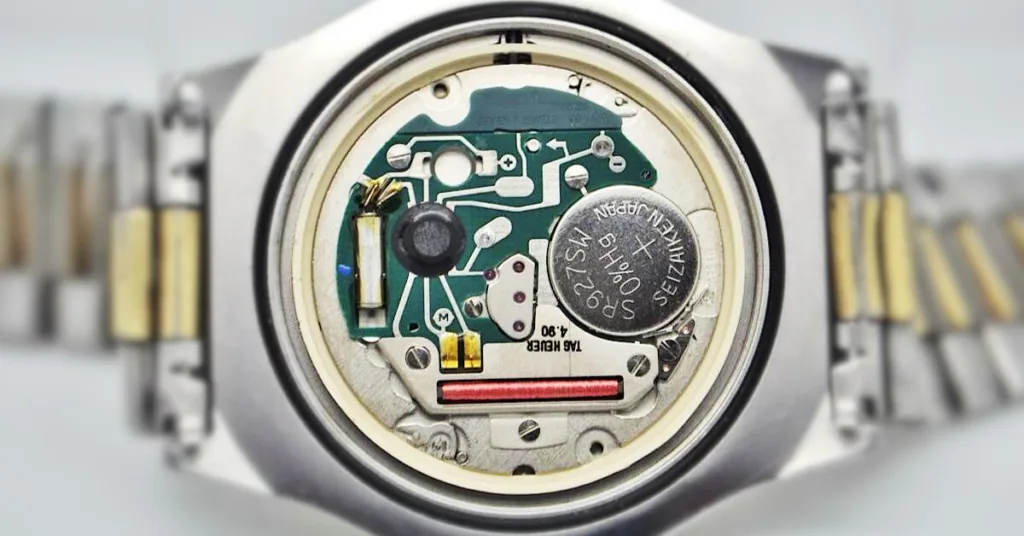
Following that vibration, it’s going to then send a frequency back to the integrated circuit that will then send an electromagnetic impulse through coils and a coil block that are in close proximity in order for the hands to move.
Given the difference in the amount of oscillations taking place between, say, that balance wheel versus this quartz crystal that’s vibrating 32,000 times per second, you could imagine that this is going to be more of an accurate movement, which it certainly is.
In addition, instead of using mechanical power, it does require an actual third-party stored energy source, which is that battery. You probably will hear very often about a battery having to be replaced on a watch. This is typically for a quartz watch.
The other thing to consider here on the front of the watch and a very easy way to tell, in most cases, not always true but in pretty much 99.9 percent of cases, on the front of the watch, there will be a ticking second hand, but it’ll be once per second.
That is usually a dead giveaway that it is going to be a quartz watch.
Mechanical vs Quartz Watches
If you’re playing along at home, you probably can see that there’s a lot of upsides with going with the quartz.
When this thing was released, it really did shake the whole industry up. It’s easier to produce, it’s more accurate, because it uses a battery you don’t have to worry about a power reserve, just every few years you’re just going to have to change that battery, and usually, they’re more affordable batteries.
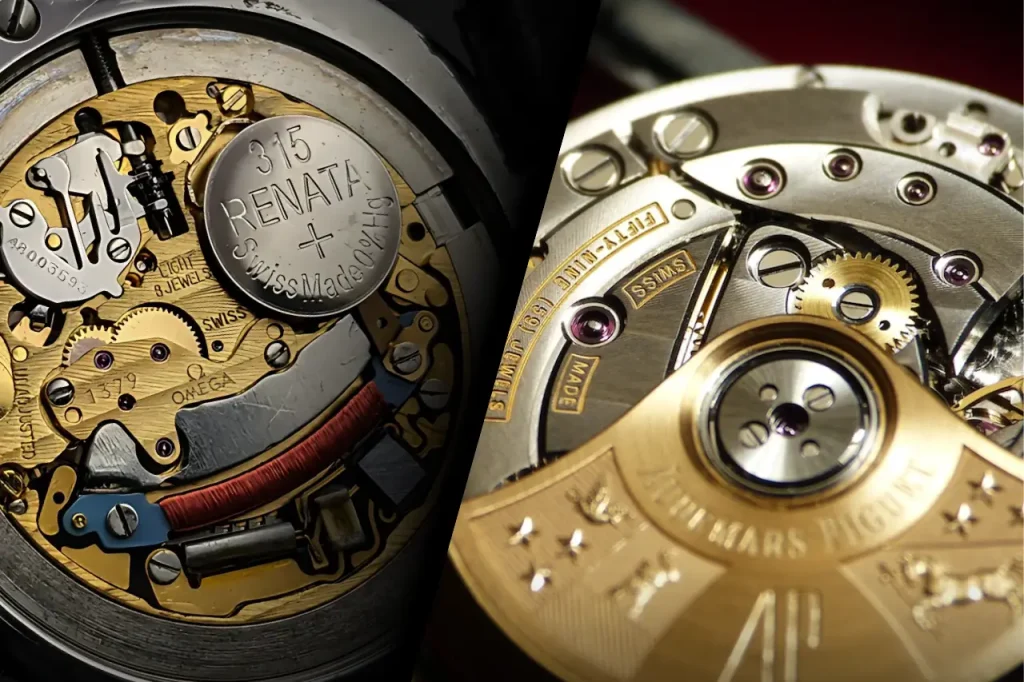
But why are mechanical watches usually more sought after by collectors?
I think it really comes down to the romantic idea because they’re usually handcrafted, there are more moving parts, and the fact that it doesn’t use an external power supply and it’s all using just gears and components of that nature.
I think there are a lot of just endearing attributes about it, and it really goes into more the romantic idea rather than it is more of the technological feat that it’s able to accomplish.
2. Understanding the Watch Industry
Now for number two on our list for this article, we have understanding the industry, the different brands that make up the industry.
There are large conglomerates that own many of the brands that make up it.
Just to go through a few of these, we first have the Swatch Group.
Swatch Group
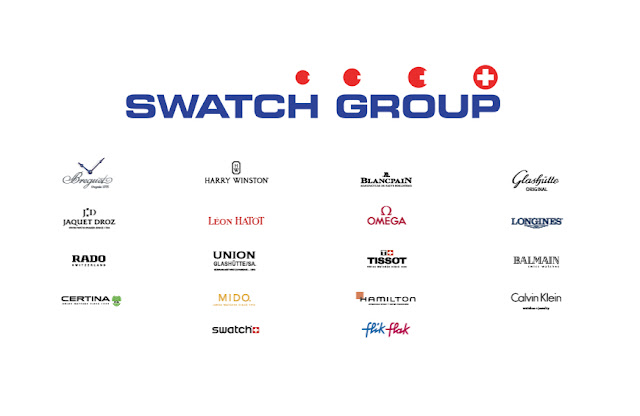
This is a Swiss group formed out of the ashes of the struggles facing the industry during the 20th century. This includes brands from a wide variety of different price categories.
You have Swatch on the entry-level side, you also have Tissot, Hamilton, Longines, Omega, which is really their mainstream luxury product, and you also have higher-end brands like Breguet. In addition, they also own movement manufacturer ETA, which we can discuss a little bit more in a bit.
From a luxury end of the watch category, you also have Richemont. Richemont, very similar in terms of diversification like Swatch, also has different luxury brands. You have Cartier, Vacheron Constantin, JLC, IWC, Montblanc, Lange, Panerai, and many others.
Seiko Group
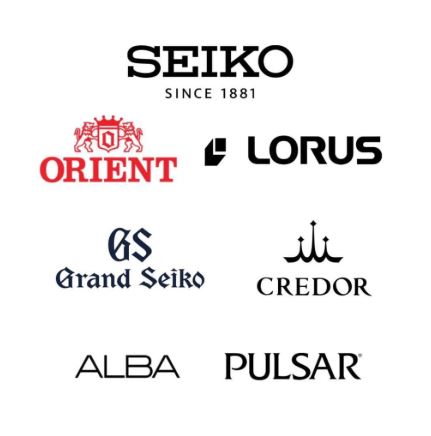
This is the Japanese powerhouse group that owns brands like Seiko, Orient, Grand Seiko, Credor, and other brands as well, as well as offering up their own movements to be used by third parties.
Citizen Group

Then you also have the other Japanese group, the Citizen Group, with, of course, Citizen Watches, and then you also have Bulova, other Swiss manufacturing brands like Alpina and Frederique Constant, and then also they own the movement manufacturer Miyota.
Then you have a brand that you’re probably familiar with, Rolex, and then also Tudor.
Both of those brands are privately owned and operated and are huge powerhouses in the industry, of course.
LVMH

Then you have LVMH, which is essentially the largest luxury conglomerate in the world, and they’ve gradually started to grow their offering in terms of watches.
They own brands like Tag Heuer, Zenith, Hublot, and others.
Kering Group
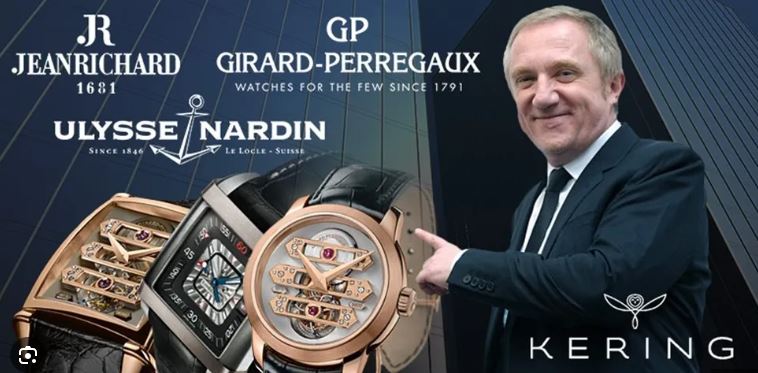
Then you have the Kering Group, which is also starting to get into watches, a large luxury group, with Ulysse Nardin and Girard Perregaux.
Independent Brands

Then you have more independent brands like Patek Philippe, which is independently operated, Audemars Piguet, as well as Breitling, which has just been owned by a private equity firm but is again kind of independently owned for the most part.
Nomos
Then you also have smaller brands like Nomos, which is a very nicely operated independent brand with great output, Zenith, and Oris. This is just scratching the surface.
In conclusion:
There are so many smaller brands out there, but from a macro point of view, these are just some of the bigger brands that you’ll commonly see, and chances are a lot of the brands that you’ll probably see from the mainstream point of view will typically be under one of these brand structures.
3. How Your Watch Should Fit
Now, number three is how your watch should fit and how to think about this when making a purchase. With more people buying watches online, I think it’s very important to understand how a watch should fit you.
When looking at how a watch should fit, there’s a few things to understand. First is you should know the circumference of your actual wrist. Try on different watches and understand what makes the most sense to you.
From a dimension point of view, the three things that are going to be probably the most important are the case diameter, the thickness, and the lug-to-lug distance.
What is the case diameter in a watch?
Case diameter is pretty self-explanatory. It’s the first thing mentioned with a manufacturer when selling online. They’re going to mention the case diameter, and that’s certainly going to be an important factor.
What is the case thickness in a watch?
Then you have your case thickness, which is also very important if you don’t want something that’s huge, big, and bulky. It will, I think, depend on the type of complication and the type of watch whether it’s going to be make or break for you.
What is the lug to lug measurement in a watch?
Then you also have lug to lug. This is a dimension that’s typically not provided by manufacturers, but if I had to say of the three, this is probably the most important in being able to determine if a watch is going to fit you.
This would probably be the one. This is measuring from the top of a watch up here from the bottom of a lug to the top position at the top of the lug, so kind of more measuring it from top to bottom here.
For me, I have 16cm wrist, and typically for me, on the lower end of watches, I like 34 to 36 millimeters when it comes to case sizes and typically getting around like 40 millimeters lug to lug and up.
Then, on the higher end, usually 39 to 42 millimeters for sports watches is kind of where I make that cut off, and 50 millimeters is that lug to lug distance.
When it comes to thickness, I think anything under 12 millimeters for more of a dress or casual watch is a great choice, and then anything under 14 millimeters or around there for divers and chronographs.
I think 14.5 is usually my cutoff there. These types of just basis points, I think, are very subjective, but you just have to try on different watches and really understand what’s best for you.
Why is Lug to Lug so important?
The watch that I’m wearing right now has around a 45-millimeter lug to lug distance, but its case diameter is 38.5 millimeters.
When you put it next to, say, this Nomos Orion, which has a 35-millimeter case and around a 44.8-millimeter lug to lug distance, it actually goes to show how two watches that have 3.5 millimeters of difference in case diameter often will wear on the wrist, kind of in terms of lug to lug, very similarly just because the longer lugs on that Nomos.
This is why I think lug to lug is just very important. It’s usually something that’s not factored in, and I think it’s something you probably want to consider when looking at a watch.
But again, often you’re going to have to try to find it from a third party because manufacturers don’t provide this.
Another thing to consider from the case diameter standpoint, but also from the thickness standpoint, when looking at a case diameter, if a case diameter is 40 millimeters, but say it has a bezel on the watch, what that is going to do from a perception standpoint is make that dial appear smaller.
For example, this Junghans Max Bill Chronoscope has a 40-millimeter actual case diameter.
The selected lug is very compact in comparison to this Rolex Explorer II, which has a 40-millimeter case diameter as well and a much larger lug to lug distance.
When you put them next to each other or strap them on the wrist, for example, they have very different types of wearing experiences because one is all dial, and one has that outer bezel. That’s something to consider.
Another thing to consider is thickness. If thickness is where it is residing, if it’s residing mostly in the case, then that is going to wear much different than if it was residing in the crystal.
This Max Bill Chronoscope has a thickness of 14.5 millimeters, but the majority of that is going to happen from the domed crystal. That wears a lot different because of that.
You don’t really feel that when you have it on the wrist in comparison to the actual case, say with a Tudor Black Bay, which is kind of like a slabbed off side of the case, which is just going to wear a little bit thicker on the wrist.
Again, this is very subjective. You just kind of have to try things on, figure out what’s best for you, get your wrist size, try on different watches even if it’s not the watch you’re going to buy, and that’ll be a good way of figuring out what the best watch is for you.
4. Watch Straps and Tools
Next up, we have straps and tools to really help take your watch to the next level.
I heard this conversation one time; it was an old friend of mine who said, “I like the Apple Watch because I can swap out the straps on the Apple Watch.”
Well, I think that’s a really good point in showing that I think a lot of people do not consider that for a watch that you’re looking at, in most cases, you can just switch out the strap with a lot of third-party options.
I have hundreds of different straps on my site. I think it’s a great way to just get the most out of your watch. Really, all you need to understand to be able to switch out a strap on your watch is to understand the lug width or the distance between the two lugs on the watch.
You’ll just want to get something that’s going to fit that.
For example, what I have on right now is a 20-millimeter lug width, and by switching out the straps on it, you can see how it just has totally different looks. You can put a NATO strap on it, where it just will really look more casual.
Types of Watch straps & bracelets
Then you also have the metal bracelet that it actually comes on, so that’s going to have a more sporty look.
Then you also have leather straps, which are going to kind of give it more of a field watch or maybe even a more dressy appearance.
There are different leathers that you could choose from. Once you figure out that lug width, you can have a ton of fun with this and be able to swap these out.
The only thing you have to consider is some watches have integrated bracelets. For example, the Maurice Lacroix Aikon, how that bracelet is meeting the case is very unique. It’s pretty custom, so in that case, any third-party strap is not just going to fit this thing.
You need something very specific that’s going to fit, but most watches out there don’t have this scenario and typically are going to be able to offer a ton of third-party options that you can buy from anywhere.
To put the actual strap on the watch and just to kind of go over some basic tools that I think are very good to have, one is a spring bar tool. I recommend Bergeon. I have them available on my site. They’ve been in business since the 1700s. They’re Swiss-made tools, and they’re just very useful. Usually, they come with two different ends.
One is going to be a fork end, and then inside what it will allow you to do and how you basically change straps is there’s a little bar inside a spring bar. It’s basically exactly what you imagine, a bar with a spring on it.
You take this little fork end of this strap tool, you push down on the spring, and it will allow it to pop out, and then you can pull out the strap and swap in new straps or bracelets, for example.
There’s also a pin end of the actual bracelet, and a lot of watches will have scenarios where you can use that to either adjust bracelets if it’s like a pin and collar bracelet or also drilled lugs, and you can use it to kind of poke out that spring bar rather than using that fork end. It’s a great tool.
I’d recommend getting Bergeon. I think I’ve tried the cheaper ones.
They’re definitely the best thing to have, and you’ll use it almost every day if you just try to switch out straps like I do all the time.
Also, there are other tools that are very useful. You can get a screwdriver set to help adjust and change different bracelet sizes. I think that’s very useful.
There are other things that I think are helpful, like a time grapher, for example, to judge the accuracy of your watches if you want to kind of get into regulation and things of that nature.
So, that’s a really nice tool. But also, there are just different things if you want to size up bracelets. There’s a bracelet block, different tools that you can use to kind of take off case backs, tweezers, things of that nature.
I actually have a toolkit on my site as well that you can purchase. It’s pretty affordable and has pretty much everything that you would potentially need to be able to work on your watch in the future until you start getting really into, say, modding or things of that nature.
But tools and straps and just accessories, I think, are so important to really be able to maximise your pieces, and sometimes I don’t think people really understand that this is the case.
5. In-House vs. Third-Party Movements
So, number five, we’re going to go back to movements, understanding the different types of movements, in-house versus third party, and then also looking at certifications like chronometer certified.
A couple of terms that get thrown around a lot are the concept of in-house movements or different manufacturers like ETA, Sellita, Seiko, Miyota, as well as certifications like a COSC certification or being a certified chronometer.
Now, first, looking at the idea of in-house. The definition of in-house movements can get a little bit gray, but in general, it is a watch movement that has been designed and developed by a manufacturer within one of their own facilities.
Where this gets a little bit dicey is the construction of smaller parts like hairsprings, screws, which often can be found by specialists or created by specialists and then put into watches.
I don’t want to get into the gray area of what makes in-house, what makes something not in-house, but usually, in-house movements are more widely collectible, they’re more sought after, and typically, to even get in the game to have your own in-house movement, it takes millions and millions of dollars to be able to create one and then also to do it at scale.
Typically, you’re paying a premium for in-house movements. They typically are a little bit more hand-finished or elevated in terms of their overall appearance in some sort, but they’re not always better in performance, and I want to get in on that.
There’s also third-party movements, and third-party movements like ETA, they’re in Switzerland, they’re owned by the Swatch Group. You also have Miyota, which is owned by Citizen in Japan.
These movements, because they are mass-produced, and with some of them, like the ETA 2824-2, having decades in the market, as well as other comparable movements like Sellita, which are basically just clones or alternatives to ETA, they do have a lot of upsides.
They’re usually cheaper to buy, they’re proven in the market, being produced in the millions, they’ve been around for years, they’re easy to regulate, parts will be easier to source down the road, and then service costs are so much lower than that of in-house movements, and I mean much lower.
“So, yes, in-house movements definitely are nice to have, but sometimes the cost per ownership is just not there, and I think this is often not considered by buyers.”
For me personally, I do not mind seeing third-party movements inside watches unless we’re starting to get into price territories of real luxury brands, so like the $5000 and up territory.
But even then, usually when watches are using those types of movements, they’re either using very highly modified versions of these or they’re producing them at a higher grade.
So, there’s different grades of these movements.
You have your standards, you also have your elaboré, and your chronometer top grade movements as well, and typically these higher grades are going to either have performance but also usually up finishing as well when doing it.
These top-grade movements are the ones that are sent in to be usually sent for chronometer testing to be certified chronometers.
Now, the most popular chronometer certification is done by COSC.
It’s a Swiss organisation that tests watch calibers through a variety of different tests, and if you want the specifics of what they’re testing, there’s plenty of information out there.
I really don’t have time to go through them all.
However, a COSC certification is basically just a widely recognised accreditation and does cost money to get the movement certified, but it really just comes with added respect because if you know watches, comes with the certification, you know the value that was demonstrated with both the assembly but also the regulation of the movement, and it’s a good way to know that a manufacturer is not cutting corners.
That said, there are internal standards for many of the brands that actually exceed what is being done by COSC, so a lot of these high-end luxury brands won’t even send their watches in for this because, honestly, their internal testing standards are higher.
6. Understanding Water Resistance
Okay, so now number six, we have water resistance, and water resistance is probably one of the most misleading ideas in all of watchmaking.
Just to give the general rundown, when you buy a watch, you probably are going to see something mentioning water resistance in meters, which is pretty self-explanatory, or atmospheres, or ATMs, or bars.
Where it gets a bit confusing is not actually the different phrases but the misleading measurements and limitations. So, when you get a watch that is tested and say it’s good up to 30 meters, it doesn’t actually mean that you could do all activities up to 30 meters of water resistance.
Basically, it’s just testing these watches at static conditions. The problem is, though, there are never usually static conditions when it comes to water.
You’re creating vacuums as you move your arms if you had it strapped to your wrist. There’s pressure associated with being underwater at a certain degree, so there’s a lot of things to consider.
Just to give a rundown of what each of these different specifications mean when looking at it on your actual watch: First, you have 30 meters, 3 bars, or 3 atmospheres. This is a watch that’s going to be splash resistant, so no swimming with this one.
This is one you don’t want to get wet. Then you have your 50 meters of water resistance, which is going to be splash resistance and can do some light swimming, but you want to be a little more careful with this, not doing crazy activities with it, but it will typically be okay.
I personally don’t swim with 50-meter water resistance watches, but however, to say maybe you’re just getting in a pool, walking around, it gets a little bit wet, this is going to be good for that.
100 meters of water resistance, 10 bar, or 10 atmospheres is going to be suitable for most water activities. You can swim, you could do a lot of things in the water with it.
Then you have your 200 meters of water resistance, which is going to be suitable for basically any water activity you can think of, things like snorkeling, scuba diving.
That said, there’s also different certifications like an ISO certification for dive watches or certified divers that undergo strenuous testing in order to handle harsh conditions underwater.
So these are just standards that need to be met by professional diver watches. Typically, these watches are 200 to 300 meters of water resistance, if not more, and just require a lot more testing to take place.
There’s a lot of divers out there that have 200 meters of water resistance.
That does not necessarily mean that it is a certified diver.
Other key points to consider with water resistances
Watches with fewer holes in the case are going to be more secure to actual water resistance.
There are things called gaskets in a watch, which are basically the seals, a rubber seal within the watch that helps keep out water.
Things like a screw-down crown, so a crown that actually has a thread on the crown, you push down, apply pressure, and it will allow it to be more secure to not let water in.
Then also there are different types of watches like a chronograph.
For example, I personally don’t think it’s ever a good idea to really swim with a chronograph unless it has screw-down pushers because even if you are very careful, you just bang one of those pushers in, and it allows water to get into the watch.
That’s going to be an issue, and that’s going to be a very costly service.
Finally, just because a watch is 200 meters water-resistant the day you get it, it doesn’t mean that it’s always going to be that.
As time goes on, if a watch is not tested periodically, it’s always good practice if you are really pushing your watch to the limit with water to always get your gaskets, get your watch tested for its water resistance to make sure you are not at risk of the thing taking on water.
Because again, that’s very costly, and it’s a bad day if that ever happens.
7. Types of Watch Crystals
Next up, we have the different types of crystals.
Three Tiers of Crystals
There are basically three tiers of crystals or three different types of crystals that you’ll commonly see.
First, you have your acrylic, your Hesalite, or your plexiglass crystals. Then you have your mineral style crystals, and you finally have your sapphire crystals. All of them have their advantages and disadvantages.
Plexiglass, Acrylic, and Hesalite crystals:
These crystals are typically the most inexpensive, but they do have some advantages.
They’re usually easier to work with. You can dome them very simply without really high costs. They also have a very warm vintage feel because these were actually the crystals that were used in a lot of vintage watches.
I personally love the look of them, but disadvantages are they do scratch quite easily.
The good thing is you can use third-party things out there like Polywatch, for example, to really buff out scratches. As long as it’s not a big, big cut or crease in the actual crystal, you usually can rub these out.
What are mineral crystals?
These are basically a nice step up in terms of scratch resistance compared to plexiglass crystals. They’re a little bit harder to buff out scratches for but are relatively affordable.
What are proprietary Hardlex & Sapphire Crystals?
You also have Seiko with the proprietary Hardlex, which is more of a mineral style crystal. Then you also have sapphire crystals.
The great thing about sapphires is they are very scratch-resistant, they’re very clear, but they are harder to work with and they are way more expensive.
Another thing to consider with sapphire crystals is usually there is an application of anti-reflective coating, which basically just helps make the watch more anti-reflective in terms of looking at the dial.
For the watch I’m wearing right now, it has two layers of anti-reflective coating.
It’s usually on the underside. This one has both layers of it, but really just it makes the watch look like it doesn’t even have a crystal on it.
So sapphires can be very clear when you have this type of anti-reflective coating on it.
8. Where to Buy Watches
Black Market Watch Sellers
First, you have your black market sellers. You basically want to avoid these like the plague. These are not places you want to go to buy your watches.
They’re typically selling replica watches or counterfeit watches, and the business practices behind this are, of course, illegal.
They’re infringing on trademarks, and if you buy these watches, I don’t think it’s a good idea, of course. The sellers are very much at risk of being prosecuted, facing big fines, or even jail time.
So I don’t condone this stuff at all. I would not go this direction ever, and I don’t think it’s a good idea to ever have a fake watch. The world lies to you all the time. I don’t think it’s a good idea to lie to yourself by wearing a fake watch.
Grey Market Watch Sellers
Next up, you have your gray market sellers. This one’s a little bit more nuanced. Gray market sellers are sellers who are non-authorised by the brands to sell the products.
How this market is created and usually what will happen is you’ll see watches may be listed at a discount compared to the retail price.
How this is all happening is basically these sellers are going and they’re finding it through different countries or finding it through different sellers and all these different little loopholes and finding products and being able to list them at a discounted rate.
They’re usually buying things in bulk or trying to locate products to be able to list at the lowest dollar amount that they possibly can.
They’re not authorised to do it. It’s not illegal to do it, though, and from the front-end standpoint, it looks like you can always get a good deal.
Just a couple of things to consider here when looking at the gray market:
You don’t really know where the products are coming from.
Typically, how it’s happening is products are sold in one country and then they’re pushed over to another country and then are sold at a discount. That’s one way this is happening.
Another thing to consider is the products themselves often are actually not in stock.
One thing you’ll see typically is, “Hey, the product will be delivered in four to eight weeks or four to 12 weeks” or something of that nature, basically just assigned to you to say, “We don’t have this watch. We’re going to try to go find it and then try to get it at the lowest dollar amount to give it at the price that we promised you at.”
Factory Warranties?
they don’t come with factory warranties.
Some of these different sellers will have their own warranties, but usually, I’ve found that they’re not very good. The customer service is typically not very good for these types of sellers either.
But if something does go wrong and you have to get a service, then you’re kind of out of luck.
You either have to spend the money to get it fixed, and then also a lot of these larger conglomerates that I mentioned earlier are taking big action on this, even turning away some of these movements from actually being worked on when something goes wrong.
When you’re spending a lot of money, I think that’s sometimes a big thing to think about, especially when you’re dealing with expensive servicing that comes with watches and owning a luxury watch.
Pre-owned Sellers
I think is a great option if you do want to get something at a reasonable price or a price that is, I think, more affordable, and that’s going pre-owned.
There are a lot of great pre-owned sellers out there that kind of give that more luxury experience. I definitely recommend this as a great way to go.
You can get a good price. Often, if you’re buying from a trusted seller, you can again just get that experience, but you really want to buy the seller.
There’s also some scary things that can happen in the pre-owned world if you don’t buy the seller. If things seem too good to be true, typically they are, usually they always are, so I would avoid that.
Find a good, honest seller that has a good track record and then just purchase from them. It’s a great way to get a good deal on a watch.
Authorised Sellers
Authorised dealers are sellers that are authorised by the brand to sell their products.
Authorised dealers usually have a better customer service experience because of them representing the brands.
That’s not always the case. There are certainly some bad authorised dealers out there.
You get access to new products, and you also get factory warranties, which in a lot of cases is very helpful if something goes wrong with the watch or, say, something goes wrong with the movement and you have to send it in.
That’s all covered if it falls within that warranty window because, I mean, some of these servicing for luxury products start costing hundreds if not thousands of dollars to get some of these serviced, so the cost of ownership can be high.
Having a long warranty is very helpful.
I hope that this could be a helpful source of information whether you are first getting into watches, as well as somebody that maybe has been into watches for a while, and maybe you’ll learn something new here today.
Contact us today with any question.

